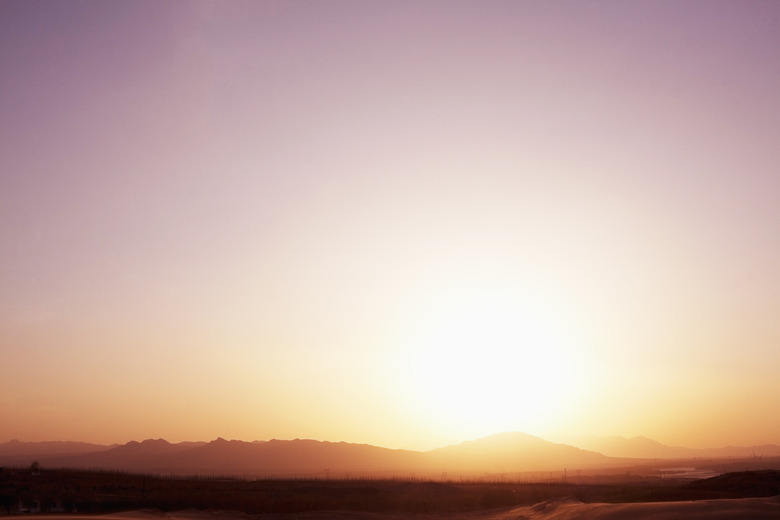What Is The Hottest Time Of The Day?
Determining the hottest time of day depends on the time of year and your location on the planet. Rays from the sun heat up the planet like a burner on a stove boils water. Even though the burner is set on high, it takes a while for the water to boil. The same is true for the temperature of the day.
Direct Sunlight
Direct Sunlight
The sun is at its highest point at approximately noon. The sun's high point is when it gives the Earth the most direct sunlight, also called solar noon. At this point, a sunburn occurs in the shortest amount of time, according to NBC 5 weatherman David Finfrock. The sun's radiation is the strongest at this point, but even though the radiation is at its highest, the temperature is not at its hottest.
Diurnal Cycle
Diurnal Cycle
Scientist refer to the rotation of Earth on its axis, creating night and day, as the diurnal cycle. The diurnal cycle is what creates the delay in temperature increase on the Earth's surface. The delay is called the thermal response. The National Climatic Data Center estimates a three- to four-hour delay between when the sun provides the Earth with the most direct sunlight, and when the temperature rises.
Thermal Response
Thermal Response
The thermal response begins at solar noon, when the surface of the Earth begins to heat. The temperature continues to climb as long as the Earth receives more heat than it sends to space. The delay from solar noon and the hottest time of the day, or thermal response, generally takes hours. The hottest part of the day during the summer is usually between 3 p.m. and 4:30 p.m., depending on cloud cover and wind speed.
Variables
Variables
Like many Earthly phenomena, the hottest part of the day is determined by different variables. If your part of the country recognizes daylight savings time, the hottest part of the day is increased or decreased by one hour, depending on the time of year. The season also makes a difference, because of the climatic changes that occur during the winter. Many times, cold fronts decrease the temperature throughout the day during this time of the year. The hottest part of the day can be in the early morning during the winter season. A cold front can come through in the afternoon, cooling down the surface of the Earth. Your location can also determine what time of the day is the hottest. Climatic changes can affect one part of the Earth or country, while another is not affected at all.
Cite This Article
MLA
Elliott, Gerald. "What Is The Hottest Time Of The Day?" sciencing.com, https://www.sciencing.com/what-is-the-hottest-time-of-the-day-12572821/. 6 October 2017.
APA
Elliott, Gerald. (2017, October 6). What Is The Hottest Time Of The Day?. sciencing.com. Retrieved from https://www.sciencing.com/what-is-the-hottest-time-of-the-day-12572821/
Chicago
Elliott, Gerald. What Is The Hottest Time Of The Day? last modified March 24, 2022. https://www.sciencing.com/what-is-the-hottest-time-of-the-day-12572821/
